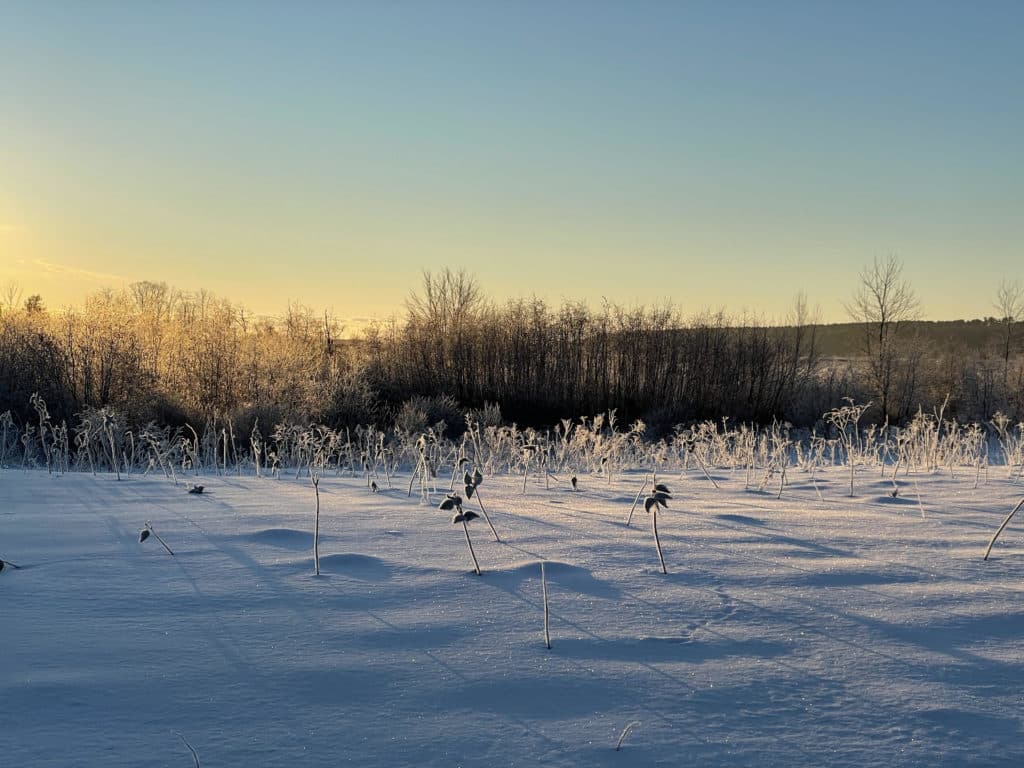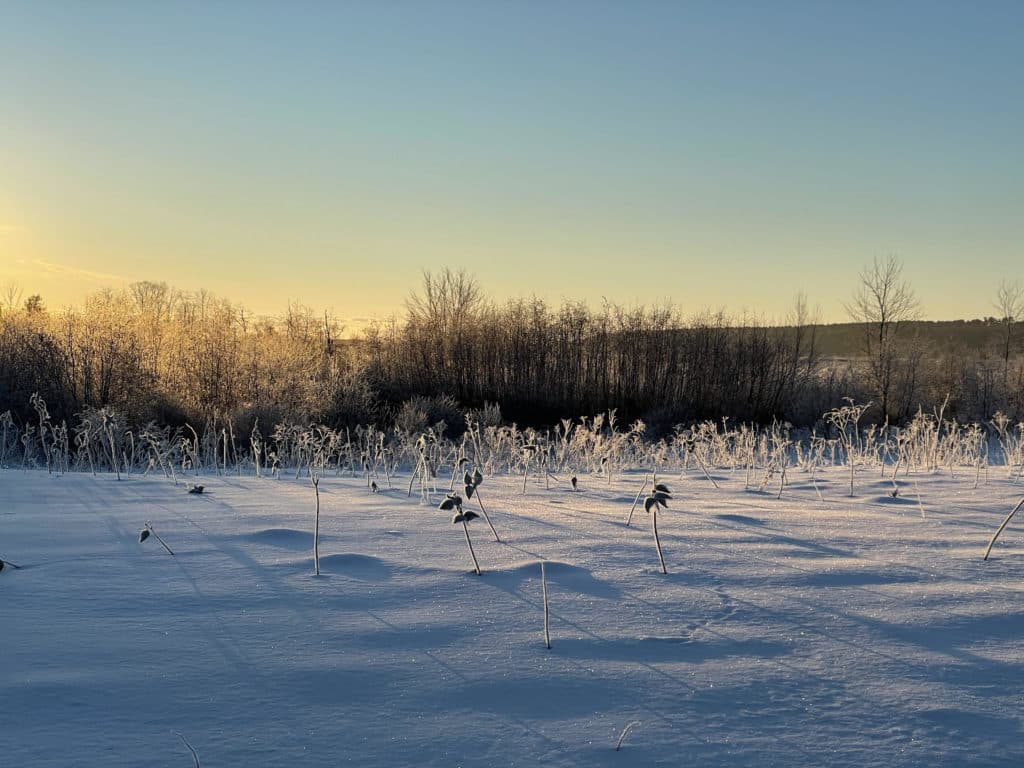
Not even a pandemic and a fresh 19 inches of snow stopped Maine birders from taking part in the Christmas Bird Count this weekend. The official season for the 121st annual Count, or CBC, runs between December 14, 2020 and January 4, 2021, though many of the regions held their event this Saturday, December 19. The cold but calm weather was a welcome sight for storm-weary birders eager to leave their homes for some socially-distant birding. Though certain safety precautions made the day feel a little unusual–birders all needed to wear masks, travel in separate cars, and the end-of-day compilation took place over Zoom–it felt, for most birders, refreshingly normal to be on a CBC again, and an abundance of irruptive finches kept everyone on their toes.
Maine Audubon asked birders from around the state to share some of their stories and images from the 2020 Christmas Bird Count.
Julia Gulka, Greater Portland CBC
The South Portland Cape Interior crew had a strong contingent of birders from the Biodiversity Research Institute. We focused our efforts on Spurwink Marsh and Hinkley Park in the morning followed by an afternoon in South Portland at Calvary Cemetery and the south shore of the Fore River among other spots. Finishing the day with 61 species, Spurwink Marsh proved productive with Pine Grosbeaks, an American Pipit, Northern Harrier, Hooded Mergansers, a Peregrine Falcon, and Northern Shrike. Other highlights included a White-crowned Sparrow at Jordan’s Farm, a scattering of Red and White-winged Crossbills and Redpolls, freshly-made banana bread, and socializing with other humans in person.
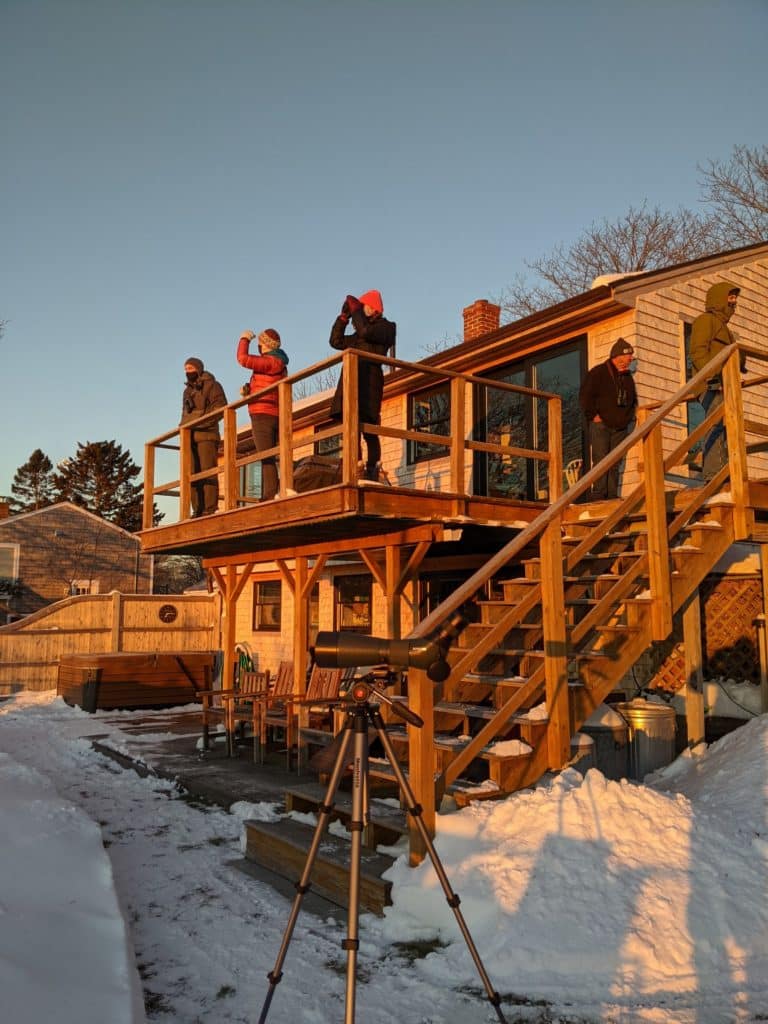
Kristen Lindquist, Thomaston/Rockland CBC
Our count begins on the Rockland breakwater, which is usually in near-Arctic conditions, but this year the harbor was so calm, and the sun came out, and we were actually warm! There were four harbor seals sunning nearby, as well. Made hunting down our requisite Purple Sandpipers a little more bearable this year. We were also happy to find some birds that are unusual for our section in the inland areas: Pine Grosbeak, Common Redpoll, one lingering Yellow-bellied Sapsucker, and a couple of flocks of bluebirds.
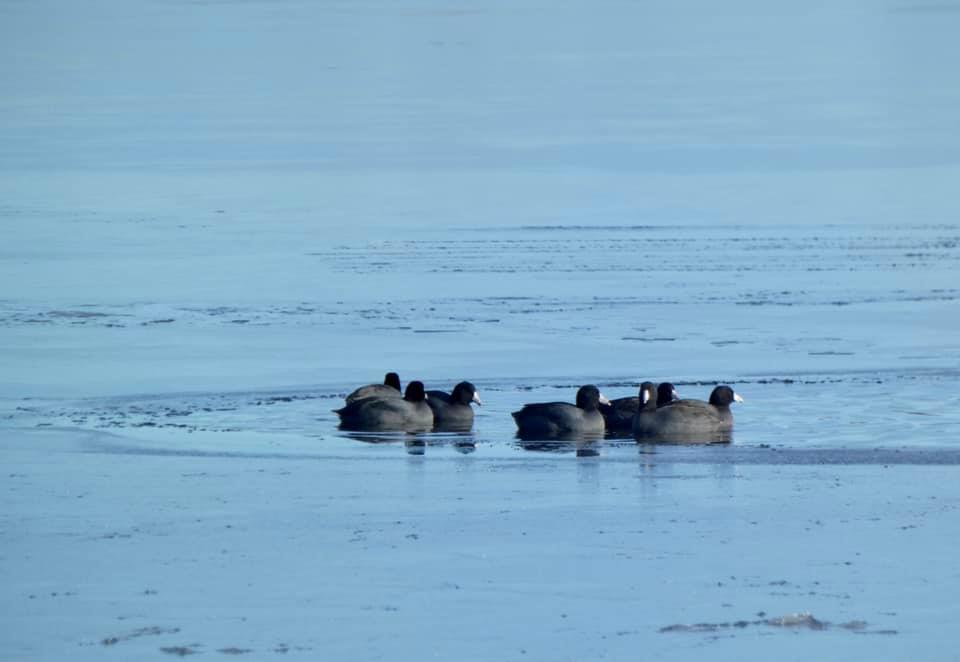
Matthew Gilbert, 16, Greater Portland CBC
Nick [Lund] and I counted around Prout’s Neck in Scarborough. We started at 3 degrees with a beautiful view of Mount Washington in the morning sun, and fog and sea smoke out over the ocean. We found a variety of sea ducks on the cliff trail, with some flyover White-Winged Crossbills and Snow Buntings being the only highlights of songbirds. The highlight of the day was walking out around the marsh north of Ferry Beach, where we saw a total of 81 Common (plus one unidentified, probable Hoary) Redpolls, not just on goldenrod and birches, but also landing out in grass of the marsh itself! It was so crazy that we weren’t paying attention to where we were walking and Nick fell through a panne! [Note from Nick: I had extra socks and boots in the car and survived just fine!] We ended the day with a very late Meadowlark from the Eastern Trail. It was loads of fun–anyone who hasn’t done a CBC should give it a try.

Prof. Brian Olsen, Orono/Old Town CBC
The Christmas Bird Count is not the only “service birding” I do each year, but, while it doesn’t have the frantic pace of a Breeding Bird Survey route, the back-country adventure of my surveys for the National Park Service, the high species counts of a summer Big Day, or frankly the physical comfort of nearly any summer survey, the CBC is my favorite. My mother and I did good ole sector 12 in the Orono/Old Town circle together, like we have every year for the past decade. The temperature held up its part in the annual tradition by tempting us with balmy breezes until the week before, then crashing into the single digits, freezing the waterfowl spots and chasing away the lagging summer migrants before they could be “official”. But we had our trusty thermoses and bountiful layers of down (it feels like we add more every year).
Like most folks, we had a great finch year with both Evening and Pine Grosbeaks, as well as a single Red Crossbill. By this deep into the pandemic, it was strange how normal it felt being masked the entire time, but we still had to remember to hold our breath to prevent our binoculars from fogging. Maybe if we’d been less successful at that, we would have convinced ourselves one of our five Common Goldeneyes was a Barrow’s. We see them most years, but not the last two. And that’s really what I love about the CBC. Each year is different, there are always surprises, there is time for talking and catching up, and the route over time becomes defined by the stories you build. “Remember that time it was so warm we saw a Wood Duck in the mill pond here?” “Remember that time the car got stuck on the ice and you had to drive the whole road backwards to get out?” “Remember that time you stopped to pee and flushed a grouse that nearly stopped your heart?” “Remember that time …”
This year wasn’t the coldest we’ve ever done (which is a high of 9 degrees), and we didn’t break our species record (a humble 31), but we did see a (very cold) Catbird for the first time ever on our route, and we crossed paths with someone doing a Big Year (at the Evening Grosbeak flock) and gave them hints on how to find the elusive Orono Barrow’s (we failed, but we hope “Team Kate” didn’t!). And most importantly, my mom and I caught up on life like we always do during the day. In a way that was thorough, yet unhurried, and comforting in both its long tradition and its usefulness, just like the CBC itself.
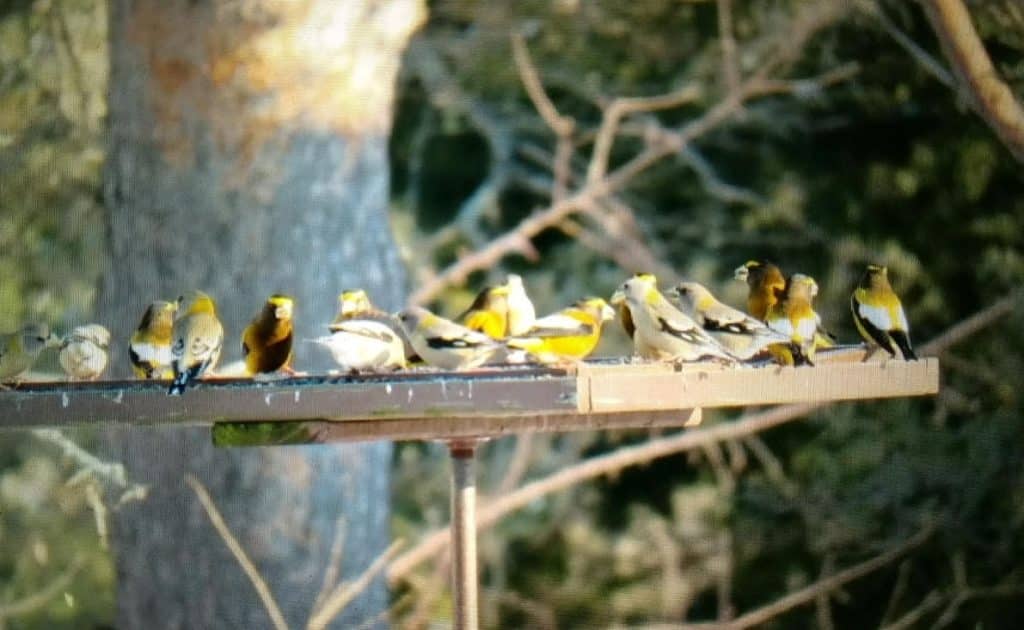
Doug Hitchcox, Maine Audubon, Compiler, Greater Portland CBC
This year’s count was an entertaining balance of challenges but ultimately came together as another great success. Bill Hancock has been coordinating this count for 40+ years but couldn’t be here this year, so asked me to help with the compilation. This usually happens in-person at Gilsland Farm–pizza, beer, and lots of laughs about the day’s birds–but COVID prevented that and we switched to a virtual format, gathering on Zoom and using a Google Sheet to tally our sightings. Hopefully by 2021 we’ll be back to Gilsland, but it was great to still share highlights, albeit virtually.
We are still gathering the final counts from all the teams, but some preliminary results are intriguing, especially the new “high count” records from this year. Some species are following a pattern we’ve seen as they expand northward, with new highs of: Tufted Titmouse (219 versus 202 previously) and Northern Cardinal (232 versus 213 previously) that have been expanding through Maine since the 50s, plus the “newer” arrivals: Carolina Wren (25 versus 14 previously) and Red-bellied Woodpecker (46 versus 24 previously), both of these previous “high count” records were set last year. Eastern Bluebirds are just shy of a new high record, but I’ll bet we’ll set it once the final teams get their numbers in.
The other remarkable counts this year came from a few irruptive species: we’ve been experiencing a large flight of Red- and White-breasted Nuthatches since this fall, and their numbers reflected that with 162 Red-breasted Nuthatches (previous high was 56) and 156 White-breasted Nuthatches (previous high was 130). Sightings of Evening and Pine Grosbeaks, plus Red and White-winged Crossbills, and Common Redpolls helped boost the preliminary species total to 106! Given the COVID restrictions and two feet of snow, I’m amazed by the great work everyone was able to do!
